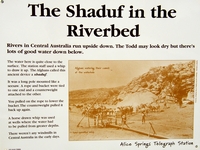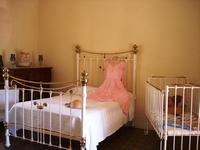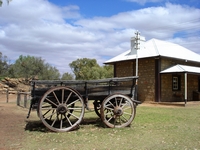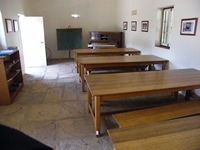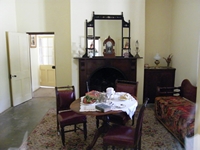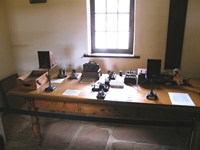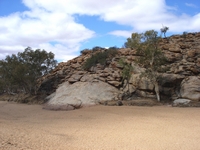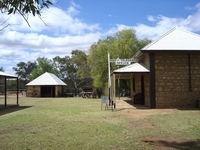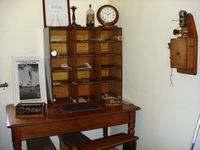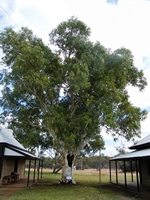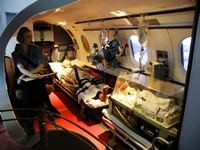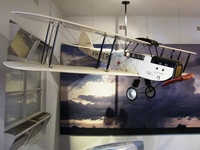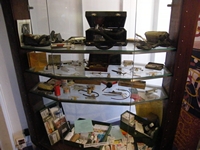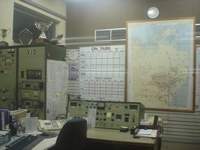Australia So Much to See


Alice Springs 2008. The Old Telegraph Station museum is to the north of the present Alice Springs, at the site of the original
town. We also gain an insight into the Royal Flying Doctor Service.
A few kilometres north of the town is the Old Telegraph Station with restored buildings and displays. The first building in
the Alice Springs was built here in 1872 when the station was established to relay messages between
The river was named after Sir Charles Todd, who was superintendent of Telegraphs in
The town of
Originally, the township at the Telegraph Station was known as Alice Springs, and a town being developed further south near Heavitree
Gap where the
Rooms in the Stationmaster’s House.

Old cart
This tree is as old as the Telegraph line, and locally the species is called Red Gum.
The Todd may look dry, but there's lots of good water below.
The water here is quite close
to the surface. They used what the Afghans called a shaduf to draw the water up.
It was a long pole mounted like a seesaw,
with a rope and bucket at one end and a counterweight at the other. The bucket was lowered by pulling on the rope. The
counterweight pulled it back up again.
For deeper wells, a horse drawn whip was used.
Tours are conducted through the Royal Flying Doctor Service (RFDS) base in
Of the fifty one aircraft at twenty seven bases around
Communications were a problem for the new service, and John Flynn worked in conjunction with
This model shows this interior of a modern Royal Flying Doctor Service aircraft.
Until 1951, the School of the Air ulitised the Royal Flying Doctor radio network to link children and their teachers. Now the
internet is the most common form of communication.
Old medical equipment is on display in the Royal Flying Doctor Service museum.
Today the Royal Flying Doctor Service offers much more than emergency flights in the outback. In additional to a 24 hour emergency
service, they conduct primary health care clinics in remote sites, offer radio and phone consultations and provide medicine chests. Their communications network was used by people in remote areas, although with modern communications, this role is declining. They also provide inter hospital transfers which are not confined to outback areas, but to all places in
There are many other museums and galleries in
